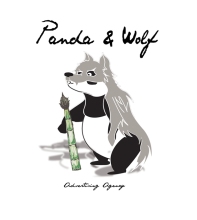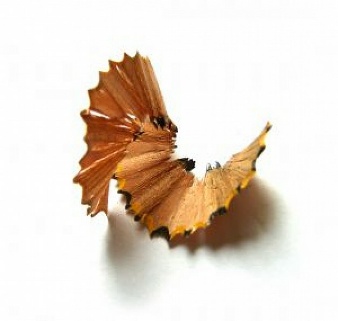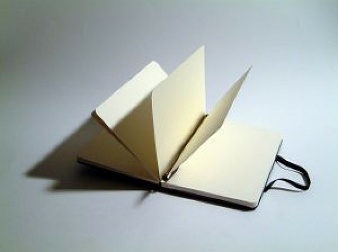The dawn of technology has completely challenged traditional ways in which people go about designing. With the emergence of all sorts of advanced and easily accessible sketching devices and software, traditional art media like pencils have gradually been replaced and abandoned to the dusty shelves and cupboards of our desks. From paper to to-the-edge sketching tablets, we cannot deny how incredibly fast the range of artistic outcomes widens with every new day: The Creative Field has become boundless.
As an experienced Design firm, we – at Panda & Wolf – have always believed in making the most of this space-wide flow of creative diffusion. We consider that the myriads of technological possibilities that are within our reach are waves meant to be surfed, flavours meant to be tasted, and new paths to be walked on. However, with major breakthroughs like photo editing and manipulation, 3D artwork creations and digital illustrations, essential basic steps of design processes like sketching are being ignored or barely practiced. And this, despite the face that sketches have always been the root to any creative progress in the Entire History of Arts. As a result, we wish to share with you some of reasons why we believe any designer – or anyone for that matter – should grab their pencils from time to time. Here are our 7 hints about sketching:
Sketching is Easy, Fast and can be done anywhere
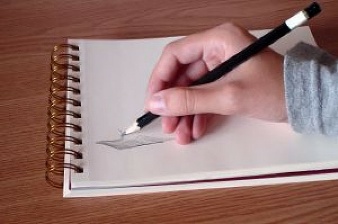 Sketching allows you to basically jot down any of your ideas, anywhere, anytime. Scribbling is fast, easy and does not require any Beaux-Arts skills. It however enables you to keep a personal record of ideas, designs and concepts which could be looked into. Sketching can therefore turn out into an extremely helpful habit, especially if you are a forgetful person!
Sketching allows you to basically jot down any of your ideas, anywhere, anytime. Scribbling is fast, easy and does not require any Beaux-Arts skills. It however enables you to keep a personal record of ideas, designs and concepts which could be looked into. Sketching can therefore turn out into an extremely helpful habit, especially if you are a forgetful person!
Sketching is the materialization of your ideas
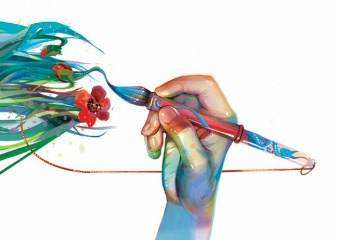 Sketching is an essential step in the process of designing as ideas cannot be materialized without sketches. In the same way that the World-famous Mona Lisa could not have been a one-shot painting, ideas cannot easily be transformed into a final outcome at once. To be able to put your ideas on paper is only the very beginning of long, well-thought and complex process of designing that gives you the opportunity to take ideas out of your mind and progressively shape them.
Sketching is an essential step in the process of designing as ideas cannot be materialized without sketches. In the same way that the World-famous Mona Lisa could not have been a one-shot painting, ideas cannot easily be transformed into a final outcome at once. To be able to put your ideas on paper is only the very beginning of long, well-thought and complex process of designing that gives you the opportunity to take ideas out of your mind and progressively shape them.
Forget Photoshop and Illustrator – Sketching is your best friend!
Software programs like Photoshop and Illustrator are generally used in the final stages of design. These include refining, editing imperfections, choosing the right color schemes and adding lettering as well as implementing additional graphics to the design foundation which has been agreed upon, if desired.
To reach this final canvas on which the colours of your creativity are to be thrown, several variations of your ideas have to be explored as your first idea is not always the best. Sketching therefore develops not only your ability to visualize ideas but also to see them from different angles. It helps you bear in mind the various options that are available to you in terms of shape, volume, perspective and colours in your design process. Out of all the possibilities you have put down on paper, you can eventually select the most suitable and prospective base. With all the innovative avenues it allows you to explore, sketching is definitely your best friend.
Sketching is an effective Communication Tool
 Ideas can be eloquently expressed. However, differences in perspectives and opinions will definitely shape the way an idea is perceived and what one initially meant may not be interpreted in the way they intended, thus creating confusion and misunderstandings in many cases. Then, what a better way to give an overview of your ideas but by giving the chance to your co-workers/ friends/ potential clients to get an overall insight of the direction you wish to take in your design process? If we follow this perspective, sketching can be an ideal technique to give people an idea of what you have in mind as sketching eases understanding amongst your team in the early stages of design and promotes sharing of opinions. Furthermore, it can transform into an effective communicative tool as others may chip in by adding their own impressions and ideas.
Ideas can be eloquently expressed. However, differences in perspectives and opinions will definitely shape the way an idea is perceived and what one initially meant may not be interpreted in the way they intended, thus creating confusion and misunderstandings in many cases. Then, what a better way to give an overview of your ideas but by giving the chance to your co-workers/ friends/ potential clients to get an overall insight of the direction you wish to take in your design process? If we follow this perspective, sketching can be an ideal technique to give people an idea of what you have in mind as sketching eases understanding amongst your team in the early stages of design and promotes sharing of opinions. Furthermore, it can transform into an effective communicative tool as others may chip in by adding their own impressions and ideas.
Creative brainstorming, healthy criticism and teamwork are some of the many positive outcomes of a round table that sketches can trigger.
Sketching can be a life-saviour
The least predictable part of being a designer is when, where and how you are going to meet a potential client. With this in mind, having a pen and a small sketch pad at hand might just be your life-saviour when the most unexpected opportunities pop up. It not only enables you to show your previous art work to any potential client that crosses your path but also to give them an insight of how you would go about shaping their expectations together with building up what they wish to convey and portray.
A common misconception which is concerned with design is that reaching a final outcome does not require a large amount of research, of creative procedures and of time. As a matter of fact, it does. Thus, being able to demonstrate the creative process to potential, long-established or confirmed clients is essential. Opting for sketching as a communicative method equally contributes to building a sense of trust between the designer and the client for the very reason that the latter can feel that his ideas are being taken into consideration.
Moreover, in the first stages of designing, sketches make it easier for the customer to understand the perspective of the designer and to figure out whether it matches their personal and professional requirements. In any event, scribbling down ideas will definitely reduce risks of disappointment in the client as they are given the chance to express their preferences and take part in the large amount of work required. Sketches henceforth help the artist to funnel down all the suggested designs to a single more-than-satisfactory result.
When a design process is initiated at Panda & Wolf, sketches are the prime step taken by our team of designers whether it concerned with a logo, a written content or with conceptualizing a new artistic project. We believe being the best in our field implies starting at the very roots of our art. And art is born out of these rough drawings which grab the essence of an idea – They rise from sketches. In the light of our creative vision, it is unthinkable not to involve our clients in each and every step of any design process as we firmly believe that advertising is not just about delivering top quality products. It is about providing innovative designs dipped in our ingenuity which not only match our clients’ expectations but also helps to create mutually fulfilling relationships with them.
Sketches speak high about what kind of designer you are
We often hear high school and college Art/ Graphic Students complain about the immense load of sketches they are given to do. As an artist, we may feel that such demands are annihilating our creativity instead of broadening it. Let’s admit it – spending late nights on 400 sketches due for the next day might not be the most enjoyable way to explore the myriads of dimensions of one’s creativity! Nonetheless, the necessity of consistent sketching is undisputable given the fact that sketching accounts for the basic skills a designer needs to have. To be able to work in fields like Photography, Art Direction, Character Designing and Advertising, such basic drawing skills need to be acquired. In many cases, the ability to sketch can only be acquired through practice. This follows very much the saying that goes: “Practice makes perfect.” Additionally, sketching abilities can easily tell people apart in a world where graphic design has become one of the top ranked preferred profession on a worldwide level.
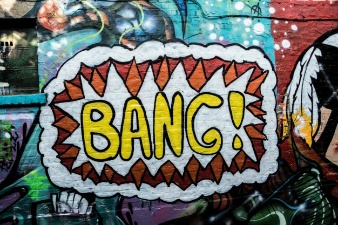
Furthermore, sketches may also shape your sense of professionalism as you acquire experience in the field of Design. The way you go about sketching says a lot about your personal organizational skills, your professional vision and about how well you can communicate your ideas with others. In such a competitive and professionally demanding world, being equipped with those traits of character can only be a plus.
Although it can be performed in barely a few minutes, sketching also makes you more and more patient. It helps the artist to develop a mature perspective on which steps in the design process require more time investment, on how to compensate for their lacking – whatever it may be – and on how to appreciate even the smallest of their work. Sketches are never perfect but they definitely help you converge towards what you have in mind. From that point of view, sketches may be considered as a strong artistic statement: No need for the elevator, the stairs can turn out as the best way to contemplate all the processes you had to go through to reach your final art piece.
Sketching as an Emotional and Artistic Mediator
Sarah Qureshi, a young and promising student in Bachelor of Science in Multimedia and animation (BSc-MM) who is currently doing an internship at Panda & Wolf Advertising Agency shares with us her thoughts on the importance of sketching.
Sarah’s sketchpads are full of doodles. The unique Arabic Henna influences, the hypnotizing spirals here and there and the tinge of uncertainty in the waves she draws will without a doubt have you contemplating her work for hours. Whilst you immerse yourself into her work, you may realize how much Sketches are an essential part of her Art.
As she speaks about sketching, Sarah explains how much of an emotional mediator this fast drawing method can be. According to her, Sketching can be a form of meditation which allows you to clear your mind and wash out all the emotions you hold inside. It not only helps you get better as an artist but becomes a stepping stone towards what you wish to create:
“You sketch out your emotions in different forms and shapes. As you do so, small things turn into the most unexpected results. And that’s the beauty of it!”
This young artist believes that a sketch can be the foundation of an idea which can lead you to transcend existing avenues and explore entirely new ones. Her advice to other artists and designers is to always plan out whatever work there is. Sketching can be the most enjoyable part of the whole design process.
“Never do it in a haste, but with passion, she says. And when you get the chance to unearth the myriads of things you are able to do, let your Sketches be the plane on which you can breathe in and out your emotions.”
